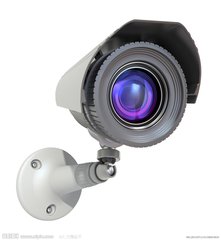How to Select Private Video Monitoring Network Line
How to Choose Private Video Monitoring Network Line for Security Monitoring
Network surveillance camera, also known as IP Camera, is a new generation of cameras that compress and encode video images captured by video sensors according to video coding standards by integrating digital video coding module in traditional security cameras, and transmit them using TCP/IP network.
Network surveillance cameras are transmitted by twisted pair wires. In surveillance engineering, the network wires are mainly used to transmit video surveillance image information data, requiring broadband, long time and high load work. Therefore, there are higher requirements for the choice of the network line.

Type of Wire
At present, video surveillance usually uses cameras with more than 2 million pixels. Many application scenarios require more than 5 million or even 4K ultra-high-definition cameras. Video transmission bitstream generally reaches 4M or more. Therefore, 100-megabit network can not meet the requirements. We need to choose at least five types of twisted pairs (CAT5E) to support Gigabit Network speed. Six kinds of network lines (CAT6) are recommended.
Network cables are mainly divided into shielded (STP) and unshielded (UTP). Shielded network cables have better transmission effect than unshielded ones, but they are expensive and cost-effective. They are only for customers with conditions to choose.
Copper Core of Wire
There are many brands and series of six kinds of network wires in the market. The network of video surveillance system can't use non-pure steel material. So we should pay special attention when choosing. There are many ways to judge whether the copper core is copper core. The simplest way is to use fire detection. When the false copper core is burning, there is smoke and even open fire. The copper core is smokeless, and the color will not change significantly after burning.
The diameter of copper core is directly related to the speed of transmission. At least 0.5 mm or more is needed. It is recommended that 0.55 mm or more be the best.
Wire twist length
The net wire is twisted by four pairs of twisted pairs of twisted pairs, which can not only resist part of the electromagnetic interference from outside, but also reduce the mutual interference between many pairs of twisted pairs of wires. The length of twisted wire with more than five specifications is within 38.1 mm to 140 mm, twisted counterclockwise, and the length of twisted pair of adjacent wires is within 12.7 mm. Video surveillance project has higher requirements for the network line. The twist length of the adjacent pair should be controlled at about 11 mm. The length of a twisted period of twisted pair is called pitch. The smaller the pitch is (the tighter the twisted pair is), the stronger the anti-interference ability is.
Of course, in addition to the above aspects, we need to pay attention to the following indicators in the selection of monitoring network (twisted pair) for engineering, including attenuation, near-end crosstalk, impedance characteristics, distributed capacitance, DC resistance, etc. The detection of these indicators requires professional testing equipment.
Previous: Brief Introduction to Face Recognition Access Control System
Next: No more
